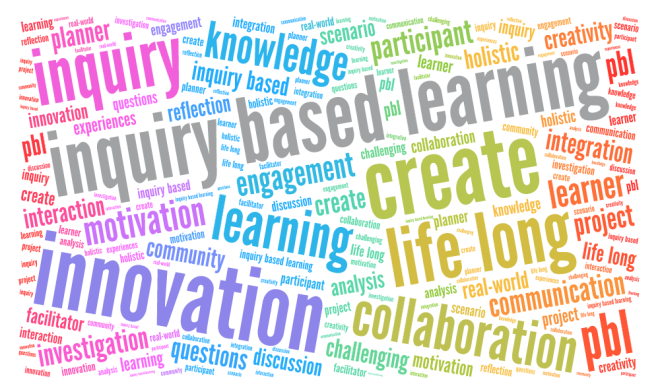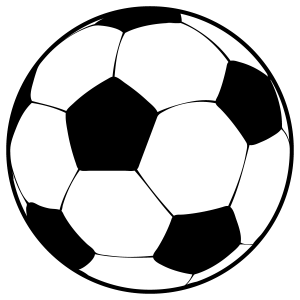 It has now been almost five weeks since this class, Information Fluency and Inquiry Learning (FRIT 7234), has begun. It’s time for me to sit down with my goals that I made at the beginning of the class and evaluate them.
It has now been almost five weeks since this class, Information Fluency and Inquiry Learning (FRIT 7234), has begun. It’s time for me to sit down with my goals that I made at the beginning of the class and evaluate them.
I believe that I am on track for two of my three goals! I have learned about a few new web 2.0 tools, specifically dealing with infographics, that I have saved to my bookmarks on my browser, and plan on incorporating into the classroom. I have also taken what information I have learned so far and brought it into the classroom, as well. For instance, while subbing last week, I helped a middle school student narrow down search results on Google and suggest tips for getting better results. This is something that I would not have been able to do had it not been before this class. Therefore, I would say that I am progressing nicely through my goals for the class.
While reading Even Geniuses Work Hard, by Carol S. Dweck, I noticed the two growth  mindsets that she listed within her article: fixed and growth. Once I was finished with the article, I spent a considerable amount of time trying to place myself within a mindset – where exactly did I belong? How did I view knowledge? And, more importantly, how did I view myself within the knowledge spectrum?
mindsets that she listed within her article: fixed and growth. Once I was finished with the article, I spent a considerable amount of time trying to place myself within a mindset – where exactly did I belong? How did I view knowledge? And, more importantly, how did I view myself within the knowledge spectrum?
After a considerable amount of time had passed, I believed that I had the answer. I think that I belong within the growth mindset. I believe that everyone can develop intelligence, I value effort, I respond well to obstacles, and I view challenging work as an opportunity to grow.
Ms. Dweck also made sure to point out in her article that a fixed mindset was not a very positive way to think. Those with a fixed mindset believe that you are born intelligent, they value looking smart “over everything else,” they do not like effort, and they do not handle setbacks well. This is obviously not conducive to a positive classroom environment. Ms. Dweck points this out within her article, as well as offers a suggestion:
… teachers need to create a growth-mindset culture in the classroom. One way to create such a culture is by providing the right kinds of praise and encouragement.
I believe that this is something that all teachers should strive for. There are some students who definitely are too hard on themselves, and definitely are stuck in the fixed mindset. However, that’s not saying that they’ll be viewing education and intelligence the same way forever. Teachers can change the way that students view intelligence, education, and their own personal worth by offering the right kinds of feedback, just as Ms. Dweck suggests in her article.
34.286900
-84.205483
 Inquiry based learning starts by posing question, problems, or scenarios, rather than simply presenting established facts or portrayed a smooth path or knowledge. The teacher acts as a facilitator, rather than a source of information. The article Creating Classrooms We Need: 8 Ways Into Inquiry Learning by Tina Barseghian shows eight ways Diana Laufenberg suggests ways to incorporate inquiry based learning in the classroom. My favorite of the tips Ms. Laufenberg provides were “be flexible” and “embrace failure.” These two came in handy when I was student teaching in a middle school that would moving toward a more inquiry-based approach. The school that I student taught at was Liberty Middle School in Cumming, GA, and I taught 7th grade Language Arts on the iTeam (this is an outdated website, but the information about the team is still accurate).
Inquiry based learning starts by posing question, problems, or scenarios, rather than simply presenting established facts or portrayed a smooth path or knowledge. The teacher acts as a facilitator, rather than a source of information. The article Creating Classrooms We Need: 8 Ways Into Inquiry Learning by Tina Barseghian shows eight ways Diana Laufenberg suggests ways to incorporate inquiry based learning in the classroom. My favorite of the tips Ms. Laufenberg provides were “be flexible” and “embrace failure.” These two came in handy when I was student teaching in a middle school that would moving toward a more inquiry-based approach. The school that I student taught at was Liberty Middle School in Cumming, GA, and I taught 7th grade Language Arts on the iTeam (this is an outdated website, but the information about the team is still accurate).
 It has now been almost five weeks since this class, Information Fluency and Inquiry Learning (FRIT 7234), has begun. It’s time for me to sit down with
It has now been almost five weeks since this class, Information Fluency and Inquiry Learning (FRIT 7234), has begun. It’s time for me to sit down with  mindsets that she listed within her article: fixed and growth. Once I was finished with the article, I spent a considerable amount of time trying to place myself within a mindset – where exactly did I belong? How did I view knowledge? And, more importantly, how did I view myself within the knowledge spectrum?
mindsets that she listed within her article: fixed and growth. Once I was finished with the article, I spent a considerable amount of time trying to place myself within a mindset – where exactly did I belong? How did I view knowledge? And, more importantly, how did I view myself within the knowledge spectrum?
 you previously learned… analyze the challenge, and judge what to do, mindful of a repertoire of prior learnings; then, implement a purposeful move, and assess its effect.”
you previously learned… analyze the challenge, and judge what to do, mindful of a repertoire of prior learnings; then, implement a purposeful move, and assess its effect.” How does someone find the answers to questions they might have? The answer is, unsurprisingly, to Google it. This should come without a shock. Before Google,
How does someone find the answers to questions they might have? The answer is, unsurprisingly, to Google it. This should come without a shock. Before Google, 
 The resources in Module 1 were definitely insightful to information presented online and inquiry learning.
The resources in Module 1 were definitely insightful to information presented online and inquiry learning.
 This is the first time that I’ve used a blog since I was in middle school, about twelve years ago! I’ve also never had a Twitter account, and have never been on the website, except when something was linked to the website. I’m only a few days into this class and already have gotten new information out of it!
This is the first time that I’ve used a blog since I was in middle school, about twelve years ago! I’ve also never had a Twitter account, and have never been on the website, except when something was linked to the website. I’m only a few days into this class and already have gotten new information out of it!